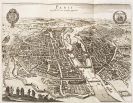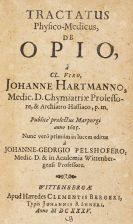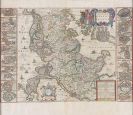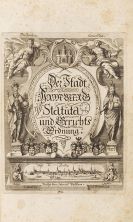
Johannes Hevelius
Danzig
1611 -
Danzig
1687
Johannes Hevelius (also known as Johannes Hewel or Johann Hewelke, 1611-87), son of a wealthy Danzig patrician family, was one of the leading astronomers of his time. At first he studied jurisprudence in Leiden, before he took over his father's brewery in Danzig, but soon spent all his time with astronomy.
In 1641 Johannes Hevelius set up an observatory in the roof of his Danzig home, which, at that time, was the largest observatory in Europe. He built high-quality astronomical instruments, which he used for topographic examinations of the sun and the planets, particularly the moon. With his main work "Selenographie" (1647), whose splendid illustrations he engraved himself in copperplate, he produced a first, long-standing topographic study of the moon, which does not only contain a detailed description of the moon's surface, but also a description of the moon phases and the moon's librations. The Latin term "mare" for moon spots can be traced back to his works.
Johannes Hevelius presented a depiction of the entire celestial sky in his "Prodromus astronomiae", which was published posthumously in 1690.
Would you like to sell a work by Johannes Hevelius?
Infos for seller








